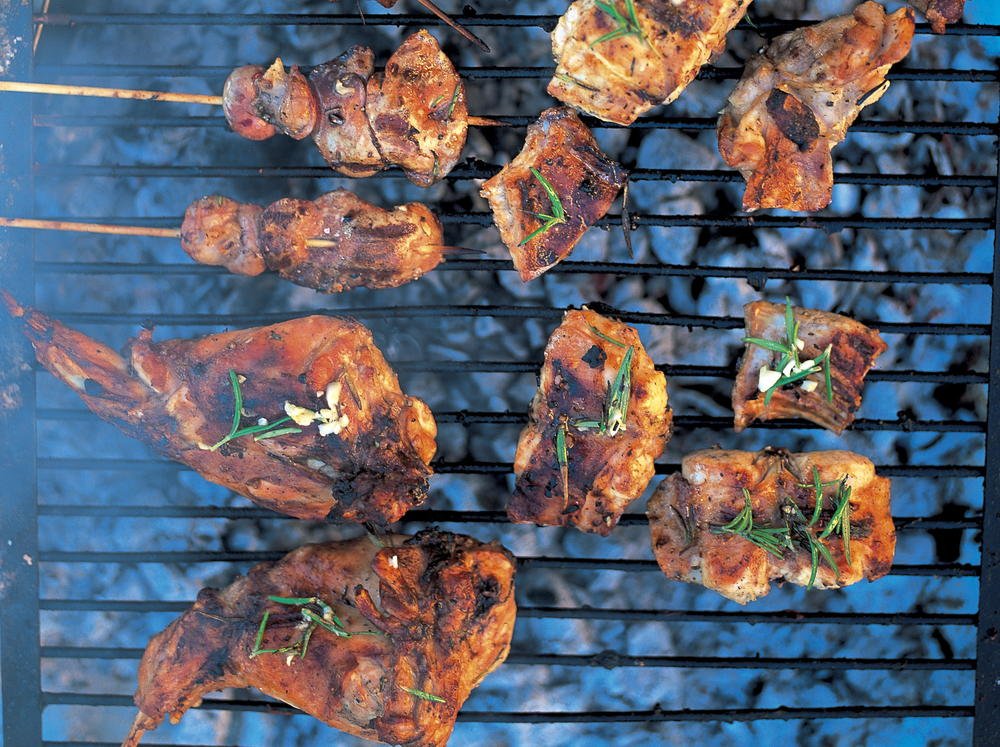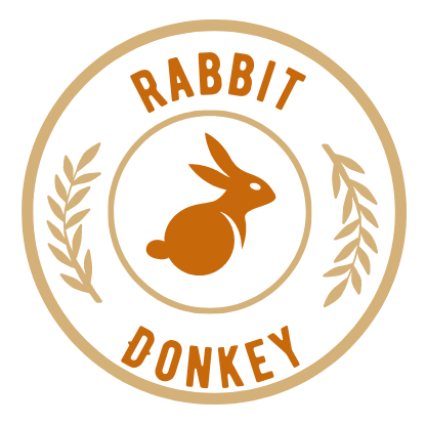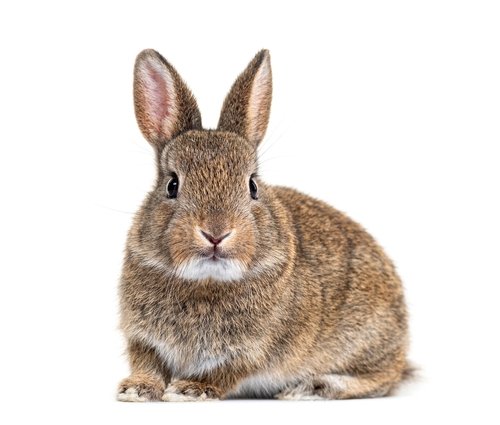Rabbit Meat: A Delicious and Sustainable Choice for 2024
Rabbit meat has long been cherished for its delicate flavor, tender texture, and versatility in the realm of culinary endeavors. So why should we eat this animal?

As we embark on a gastronomic exploration of this delectable protein source, it is fascinating to delve into the rich history behind rabbit meat consumption and its thriving popularity in modern cuisine. From ancient civilizations to contemporary food trends, rabbit meat has stood the test of time as a cherished ingredient in diverse cultures.
History of Rabbit Meat Consumption
The consumption of rabbit meat dates back thousands of years. In ancient Rome, rabbits were kept in large warrens for their meat and fur. They were considered a prized delicacy, reserved for nobility and esteemed guests.
The Romans even brought rabbits with them as they expanded their empire, spreading the appreciation for this delectable protein across Europe. Similarly, during the Middle Ages, European monks began farming rabbits within monastery walls due to religious dietary restrictions that prohibited eating red meats such as pork or beef.
This monastic practice helped sustain both the monasteries and provided an abundant source of lean protein. In Asia, particularly China and Japan, rabbit meat has been part of their culinary repertoire since ancient times.
In Chinese culture specifically, rabbits are associated with longevity and fertility. Consequently, rabbit dishes have become common during festive celebrations and banquets.
Growing Popularity of Rabbit Meat in Modern Cuisine
In recent years, there has been a resurgence in the popularity of rabbit meat within culinary circles worldwide. As people seek healthier alternatives to traditional meats like beef or pork while embracing sustainable food practices, they are turning towards rabbit as an ethical and environmentally friendly option.
Rabbit meat is highly regarded for its nutritional value. It is leaner than chicken or turkey and contains significantly less fat. Furthermore, it is an excellent source of protein, vitamins (such as B12), and minerals (like iron and zinc).
This combination of health benefits has attracted the attention of health-conscious individuals looking for a nutritious addition to their diet. Moreover, rabbit meat offers an exciting opportunity for adventurous home cooks and professional chefs to experiment with a unique ingredient.
Its delicate flavor lends well to various cooking techniques, from roasting and grilling to stewing and braising. With numerous rabbit recipes available, the culinary possibilities are endless.
Overall, the revival of interest in rabbit meat represents an exciting chapter in healthy game cooking and game meat preparation. With its rich history reaching back through time and its rising prominence in modern cuisine, rabbit meat continues to captivate taste buds across cultures while promising a sustainable future for our culinary endeavors.


Lorem ipsum dolor sit amet, consectetur adipiscing elit. Ut elit tellus, luctus nec ullamcorper mattis, pulvinar dapibus leo.
Overview of Rabbit Meat
Nutritional value and health benefits
Rabbit meat is not only delicious but also offers many nutritional benefits. It is a lean meat that provides an excellent source of high-quality protein, making it an ideal choice for those looking to incorporate lean meats into their diet.
Rabbit meat contains approximately 20 grams of protein per 100 grams, even higher than chicken or beef. This makes it an excellent option for athletes, fitness enthusiasts, and anyone seeking to maintain muscle mass or build strength.
High protein content in rabbit meat
One of the standout features of rabbit meat is its high protein content. Protein is vital in various bodily functions, such as muscle repair, immune system support, and hormone production. The rich protein content in rabbit meat helps meet the recommended daily intake and aids in maintaining optimal health.
Low in fat and cholesterol
For those concerned about fat or cholesterol intake, rabbit meat is a fantastic choice. It is significantly lower in fat compared to other meats such as pork or beef. The low-fat content contributes to a healthier cardiovascular system and makes it an appealing option for weight management and overall well-being.
Additionally, rabbit meat has naturally low levels of cholesterol. High levels of dietary cholesterol can increase the risk of heart disease; however, rabbit meat is low in saturated fats and cholesterol, so it becomes an excellent alternative for individuals seeking heart-healthy meal options.
Rabbit meat – rich in vitamins and minerals
Rabbit meat boasts a rich profile of essential vitamins and minerals for optimal health. It contains vital B vitamins such as B12, which are crucial in red blood cell formation and neurological function.
Additionally, rabbit meat is an excellent source of vitamin B6, which aids metabolism regulation. Furthermore, rabbit meat is a good source of essential minerals such as iron, phosphorus, and potassium.
Iron is essential for producing red blood cells and transporting oxygen throughout the body, while phosphorus and potassium contribute to maintaining healthy bones and muscles. Rabbit meat offers an impressive nutritional profile covering high protein content, low fat and cholesterol levels, and a rich assortment of vitamins and minerals.
By incorporating rabbit meat into your diet, you enjoy its delectable flavors and reap the numerous health benefits it provides. Whether you want to diversify your protein sources or explore healthy game cooking options, rabbit meat is an excellent choice, contributing to a balanced diet with exceptional nutritional value.
Selecting the right rabbit meat
Farm-raised vs wild rabbits
When it comes to cooking rabbit meat, one crucial consideration is selecting the right source. Farm-raised and wild rabbits have distinct characteristics that can influence your dish’s final flavor and texture.
Farm-raised rabbits are generally more readily available and have a milder flavor than their wild counterparts. On the other hand, wild rabbits tend to have a gamier taste due to their natural diet and increased muscle development from living in the wilderness.
If you prefer a more delicate flavor profile, opt for farm-raised rabbits. However, wild rabbit meat may be your ideal choice if you desire an adventurous culinary experience with robust flavors reminiscent of nature.
Choosing the right breed for specific dishes
Just as different breeds of livestock produce subtly different flavors and textures in their meat, various breeds of rabbits offer unique qualities when it comes to cooking. For example, New Zealand White rabbits are known for their tender meat and mild flavor, making them versatile for various recipes.
Flemish Giant rabbits possess slightly stronger flavors but still maintain tenderness, making them excellent choices for stews or slow-cooked dishes where they can develop rich, savory flavors over time. Additionally, certain breeds like Californian or Chinchilla are popular choices when preparing rabbit fur and utilizing their tasty meat in recipes.

Cleaning and butchering techniques for rabbit meat
Removing fur and skin properly
Before diving into any game meat preparation process, proper cleaning is essential to ensure a hygienic and enjoyable dining experience. One common method to remove fur from a rabbit carcass effectively involves scalding the animal briefly in hot water (around 160°F) after slaughter. This helps loosen the hair follicles before scraping the fur away with a knife or plucking it by hand.
Once the fur is removed, skinning the rabbit becomes relatively straightforward by incision along the belly and carefully peeling back the skin. A good tip to facilitate this process is to gradually separate the skin from the meat, taking caution not to puncture any internal organs.
Cutting rabbit meat into desired portions
Once you have a clean and skinned rabbit carcass, it’s time to cut it into portions suitable for your chosen recipe. Removing both hind legs at the joint where they meet the body will create two distinct leg pieces.
Next, separate each leg into drumsticks and thighs if desired, using their natural joints as guidelines for precise cuts. The saddle, also known as the backstrap, offers tender meat along both sides of the spine and can be removed by making an incision along its length and carefully separating it from the bone with a sharp knife.
Divide any remaining front shoulder meat according to your preference or recipe requirements. Remember, proper portioning ensures even cooking and enhances the presentation of your culinary masterpiece.
By following these recommended steps for selecting rabbits based on their origin and breed while employing proper cleaning techniques and precise butchering methods, you can ensure that your rabbit meat is primed for creating delectable dishes that showcase its unique flavors and features. Whether aiming for succulent stews or elegant roasted preparations, mastering these skills paves the way for healthy game cooking adventures packed with delightful culinary experiences.
Cooking Techniques for Rabbit Meat
Roasting
Roasting rabbit meat is a classic method that brings out its delicate flavors while adding tantalizing crispness to the exterior. When roasting rabbit, it is important to consider the seasoning options to elevate the taste.
Herbs like rosemary, thyme, and sage work exceptionally well with rabbit, adding earthy undertones that complement its subtle sweetness. Spices such as paprika, cumin, or coriander can provide an extra layer of complexity to the dish.
For those who prefer marinating their meat before roasting, consider using olive oil, lemon juice, garlic, and Dijon mustard for a flavorful marinade. As for cooking temperature and time, preheat your oven to 350°F (175°C) and roast the rabbit until it reaches an internal temperature of 160°F (70°C), ensuring juicy meat without compromising safety.
Braising
Braising is an excellent technique for tenderizing rabbit meat while infusing it with deep flavors. To ensure succulent results, tenderizing techniques such as marinating or brining should be employed beforehand.
Marinating the meat in a mixture of buttermilk or yogurt with spices and herbs will enhance tenderness and impart tantalizing flavors throughout the dish. Alternatively, bringing in a solution of salt water can help retain moisture during cooking.
When choosing a braising liquid for rabbit meat, choose options that add richness and complexity, like wine or broth. The acidity of wine helps break down connective tissues and imparts subtle fruity notes into the dish, while broth adds depth and savory undertones.
Grilling/Barbecuing
If done correctly, grilling or barbecuing rabbit meat can introduce smoky flavors while maintaining its inherent tenderness. Marinating the rabbit beforehand is crucial to prevent dryness.
With many marinade options available, consider using olive oil, balsamic vinegar, garlic, and herbs like thyme or rosemary to infuse the meat with robust flavors. When grilling or barbecuing rabbit meat, monitoring the cooking time and temperature closely to achieve optimal results is important.
Cook the rabbit over medium heat until it reaches an internal temperature of 160°F (70°C). To prevent drying out, it is advisable to baste the meat occasionally throughout the cooking process with some marinade or a brush of melted butter.
Stewing/Simmering
Stewing or simmering rabbit meat is a fantastic way to create hearty and flavorful dishes such as stews or soups. For maximum flavor infusion in these slow-cooked dishes, recommended ingredients like onions, carrots, celery, garlic, and herbs such as thyme or bay leaves will elevate the taste profile.
Simmering rabbit meat in a broth made from vegetables or chicken stock will add depth and richness to the final dish. Additionally, simmering for an extended period over low heat allows ample time for connective tissues to break down gradually, resulting in tender and succulent meat that falls off the bone effortlessly.
By employing these cooking techniques – roasting, braising, and marinating options for grilling/barbecuing rabbit meat stewing/simmering – you can unlock the full potential of healthy game cooking with rabbit recipes while preserving its nutritional value. Whether you choose traditional roasting methods with aromatic seasoning blends or opt for slow-cooked stews that meld flavors harmoniously together, there are numerous ways to savor the unique taste of this versatile game meat preparation.
Specialty Rabbit Dishes from Around the World
French Cuisine
French cuisine is renowned for its exquisite flavors and sophisticated techniques, and rabbit meat holds a special place in their culinary traditions. One of the most iconic French rabbit dishes is the classic Lapin à la Moutarde, which translates to Rabbit with Mustard.
This dish features tender pieces of rabbit slowly cooked in a flavorful sauce made with Dijon mustard, white wine, cream, and aromatic herbs like thyme and rosemary. The tangy yet creamy sauce perfectly complements the delicate taste of rabbit meat, creating a truly delectable dining experience.
Another beloved French preparation method for rabbits is Rabbit Confit. Like duck confit, this process involves slow-cooking the meat in its fat until it becomes richly flavored and incredibly tender.
The resulting confit is often served with crusty bread or hearty winter vegetables. The combination of tender rabbit meat with its distinct flavor profile makes this dish an absolute delight for lovers of French cuisine.
Italian Cuisine
Italians have also mastered the art of preparing rabbit meat in ways that highlight its succulent qualities while incorporating their unique flavors. In Tuscany, the delightful Tuscan-style roasted rabbit is on many traditional menus.
This dish showcases simplicity at its best by marinating the rabbit pieces with olive oil, garlic, fresh herbs like rosemary and sage, and a hint of lemon zest before roasting it to perfection. The result is tender meat with crispy skin bursting with Mediterranean flavors.
Another popular way to savor rabbits in Italy’s Emilia-Romagna region is by making a delicious Rabbit Ragu. This slow-cooked ragu entails braising diced rabbit meat until it becomes fork-tender in a savory sauce made from tomatoes, onions, carrots, celery, red wine, and aromatic herbs.
The ragu is typically served over fresh pasta, such as tagliatelle or pappardelle. The tender rabbit meat and the rich, hearty sauce create a comforting dish that exemplifies the essence of Italian cuisine.
Conclusion
Exploring the culinary world of rabbit meat opens up a realm of diverse and compelling flavors from different cultures. French cuisine showcases the elegance of rabbit through dishes like Lapin à la Moutarde and Rabbit Confit. In contrast, Italian cuisine introduces a rustic charm with Tuscan-style roasted rabbit and Rabbit Ragu. These specialty recipes are just a glimpse into the vast array of delicious possibilities when preparing rabbit meat.
With its high nutritional value and versatility in various healthy game cooking methods, rabbit truly deserves its place on our plates. So why not embrace this flavorful game meat and embark on a gastronomic journey by trying these delightful rabbit recipes?





